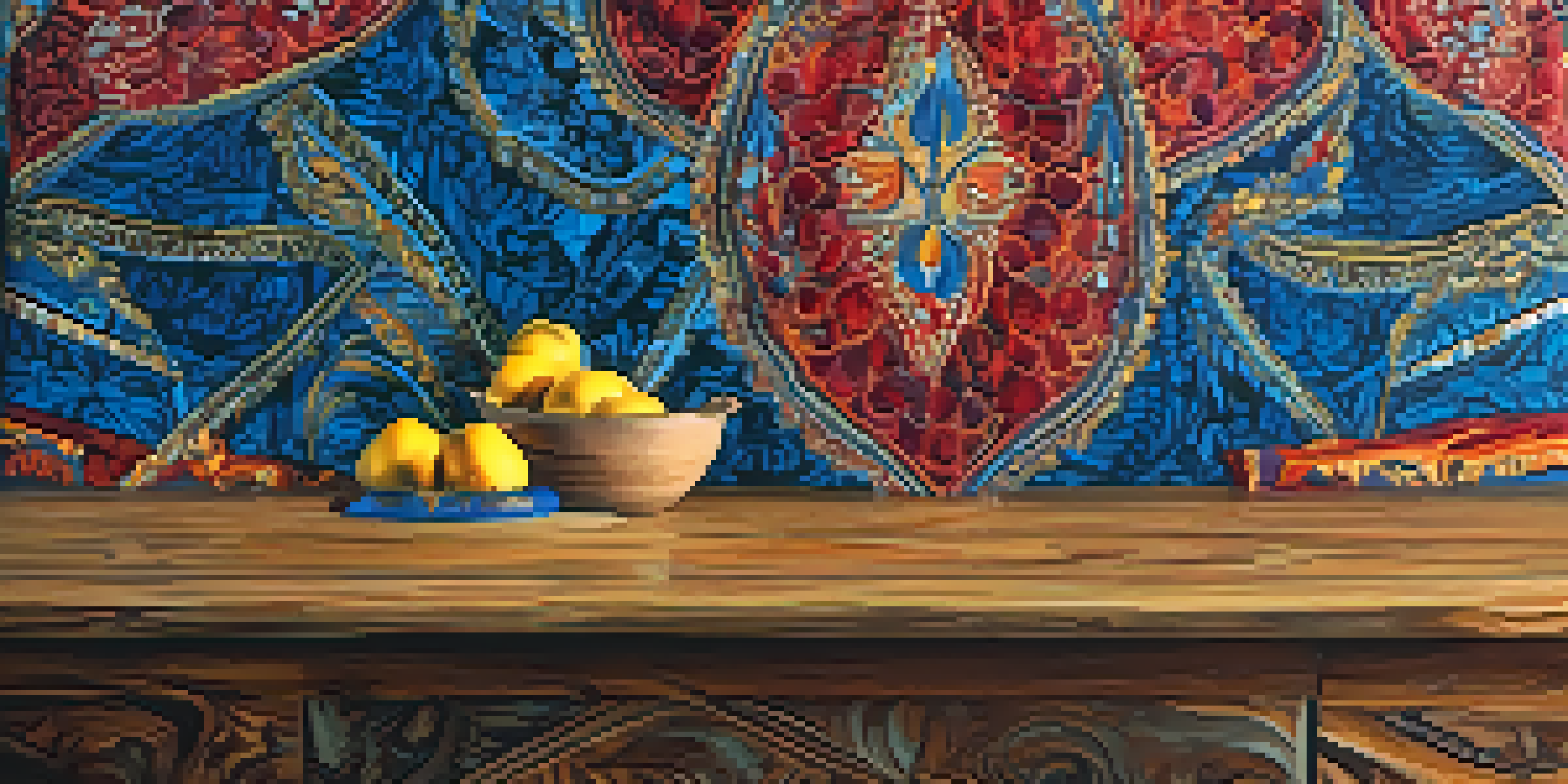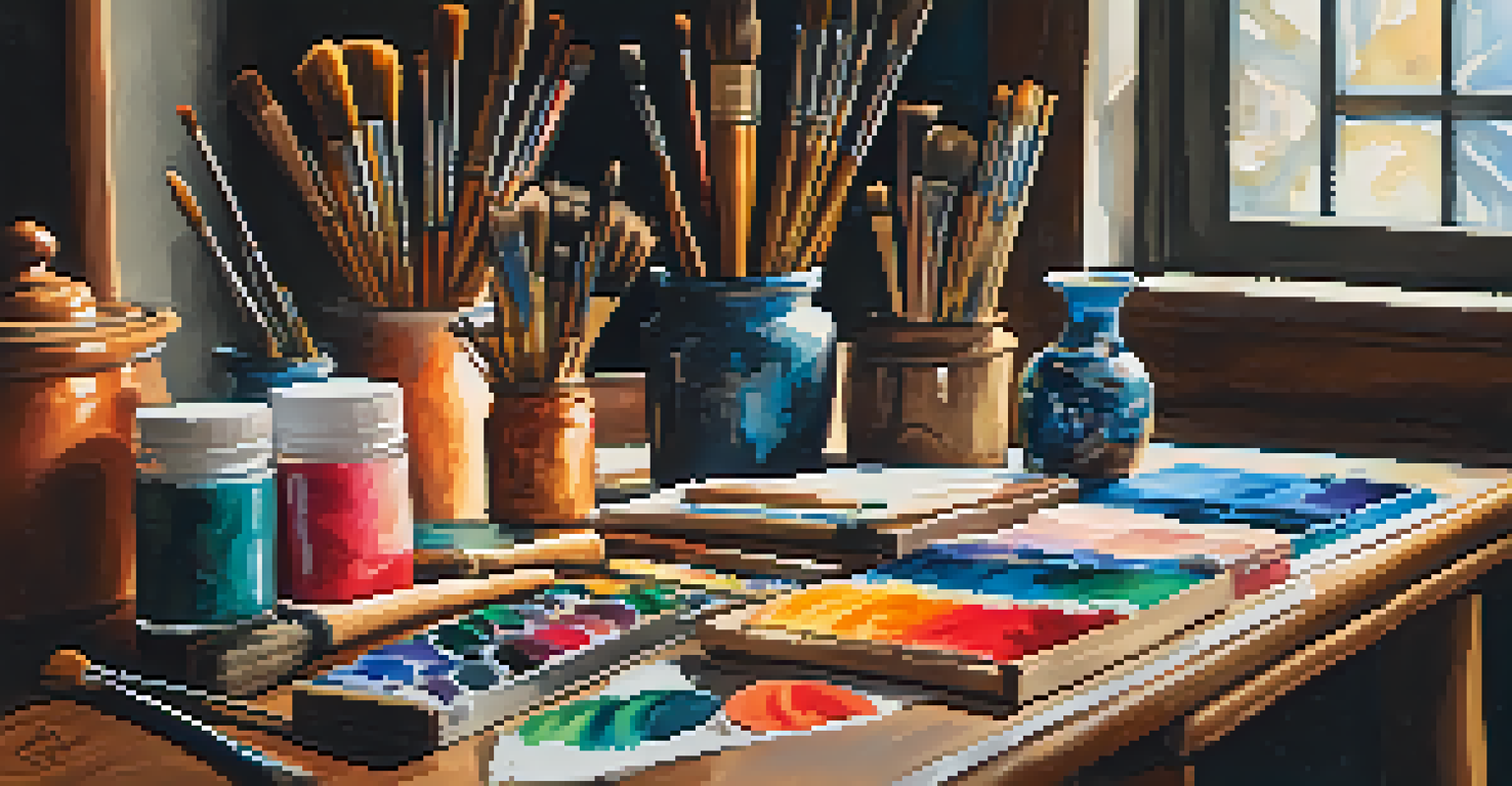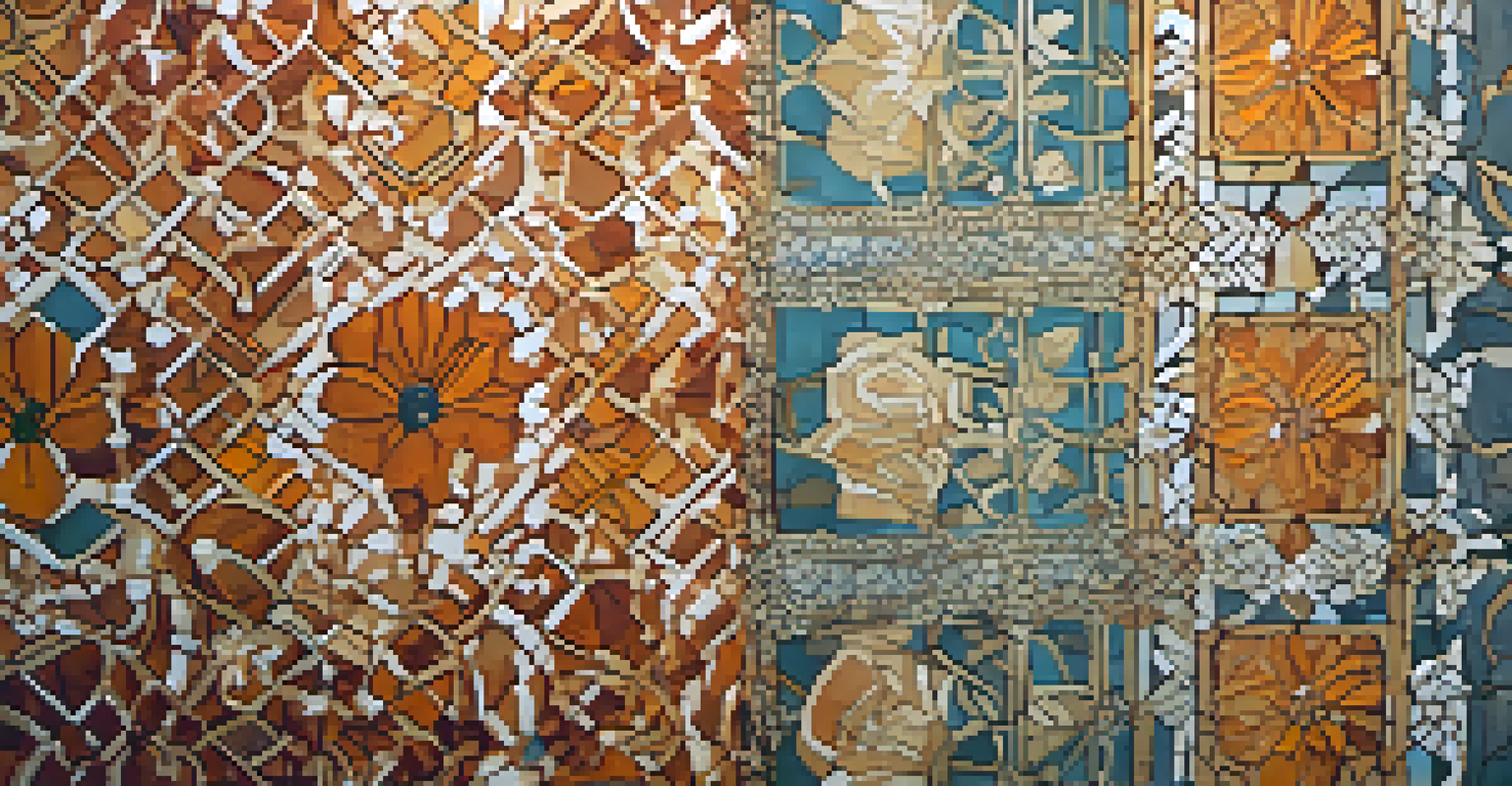Exploring the Techniques of Batik: A Guide to Fabric Art

What is Batik? Understanding the Fabric Art Tradition
Batik is a captivating fabric art form that originates from Indonesia, characterized by its intricate designs and vibrant colors. The technique involves applying wax to fabric before dyeing, creating a stunning contrast between the dyed and untouched areas. This age-old practice has deep cultural significance, often telling stories through its patterns and motifs.
Batik is a beautiful art form that expresses the culture and identity of a people, telling stories through its intricate designs.
Historically, batik was used to adorn garments for royal families and ceremonial events, showcasing the craftsmanship and artistry of its makers. Today, it has transcended its traditional roots, finding its way into contemporary fashion, home decor, and art installations. This evolution reflects both a respect for heritage and an embrace of modern creativity.
Whether you're an artist or simply a fabric enthusiast, understanding batik's origins and meaning adds depth to your appreciation of this beautiful art form. Each piece is not just a fabric but a canvas of history, culture, and personal expression.
The Tools of the Trade: Essential Batik Equipment
To create batik, you'll need some specific tools that are integral to the process. The most essential is the canting, a small tool that holds hot wax and allows for detailed application on fabric. Other tools include brushes for broader strokes and dyes that can range from natural to synthetic, depending on the desired effect.

Choosing the right fabric is also important—cotton and silk are popular choices because they absorb dye well and hold the wax effectively. Additionally, a heat source, like a stove or an electric hot plate, is necessary to melt the wax before applying it to your fabric. Each tool plays a crucial role in ensuring that your batik art is both beautiful and durable.
Batik: Rich Cultural Tradition
Batik is an intricate fabric art from Indonesia that combines storytelling and craftsmanship through its vibrant designs.
Having the right equipment not only makes the process easier but also enhances your creative expression. As you become more familiar with each tool, you'll discover unique techniques and personal preferences that influence your batik style.
Preparing Your Fabric: The First Step in Batik
Before diving into the artistic process of batik, it's vital to prepare your fabric correctly. Start by washing the fabric to remove any impurities that may interfere with dye absorption. A clean canvas ensures that the colors remain vibrant and true to their intended shades.
Every piece of batik is a canvas of history, culture, and personal expression.
After washing, you can iron the fabric to eliminate wrinkles, which helps create a smooth surface for wax application. Make sure to use a low heat setting, especially if you're working with delicate fabrics like silk. This preparation phase is crucial because any flaws in the fabric can affect the final outcome of your design.
Taking the time to properly prepare your fabric sets the stage for a successful batik project. It’s like preparing a blank canvas for a painter—every detail matters when it comes to creating a masterpiece.
Applying Wax: The Heart of Batik Technique
Applying wax is where the magic of batik truly begins. Using the canting, you can create intricate designs by tracing your patterns onto the fabric with hot wax. The wax acts as a barrier to the dye, allowing for a beautiful contrast between the dyed and untouched areas.
It's important to work quickly but carefully, as the wax can cool and harden fast. You can also use brushes to apply wax in larger areas or for more abstract designs. Each stroke you make is a step toward creating a unique piece of art that reflects your style and creativity.
Essential Tools for Batik Making
Key tools like the canting for wax application and the right fabric choice are crucial for creating beautiful batik art.
This process requires patience and a steady hand, but the results are incredibly rewarding. The moment you see your design emerge after dyeing is truly exhilarating, as it reveals the fruits of your labor and creativity.
Dyeing Your Fabric: Bringing Color to Your Batik
Once the wax has cooled, it's time to bring your batik to life with vibrant colors. Prepare your dye bath according to the dye's instructions, ensuring that you’re using the right safety precautions. Each dye can yield different effects, so experimenting with colors can lead to stunning surprises.
Carefully submerge your waxed fabric into the dye, allowing it to soak for the recommended time. The dye will penetrate the areas not covered by wax, creating the beautiful patterns that define batik. After dyeing, rinse the fabric thoroughly to remove any excess dye and prepare it for the final steps.
Dyeing is where you can let your creativity shine—mixing colors or layering different dyes can result in intricate designs. The anticipation of unveiling your dyed fabric is a thrilling part of the batik process, as it’s a moment where your vision comes to life.
Removing Wax: The Final Step in Batik Creation
After the dyeing process, the next step is to remove the wax, revealing the beautiful design underneath. This is typically done by placing the fabric between layers of newspaper and applying heat with an iron. The wax will melt and transfer onto the paper, leaving your fabric free from any residue.
Be cautious during this process, as too much heat can damage the fabric. It’s a delicate balance of ensuring the wax is removed while protecting your artwork. Once the wax is gone, you'll see the crisp lines of your design, and it’s as if your artwork has been unveiled.
Care Tips for Long-lasting Batik
Proper maintenance, including hand washing and avoiding direct sunlight, ensures the longevity and vibrancy of your batik creations.
The satisfaction of seeing your completed batik piece is unparalleled. It's a culmination of your creativity, skill, and the time you've invested in this beautiful art form.
Caring for Your Batik: Maintenance Tips for Longevity
Now that you've created your stunning batik masterpiece, it’s essential to know how to care for it properly. Hand washing is recommended to preserve the integrity of the fabric and colors. Use cold water and a mild detergent to avoid fading and to keep your design looking fresh.
Avoid exposing your batik to direct sunlight for prolonged periods, as this can also cause colors to fade over time. Storing your batik in a cool, dry place and away from dampness can help maintain its quality. If you're using your batik for clothing, gentle handling during wear will also go a long way.

By taking care of your batik art, you ensure that it can be enjoyed for years to come. Each piece tells a story, and with the right care, those stories can continue to be shared through generations.